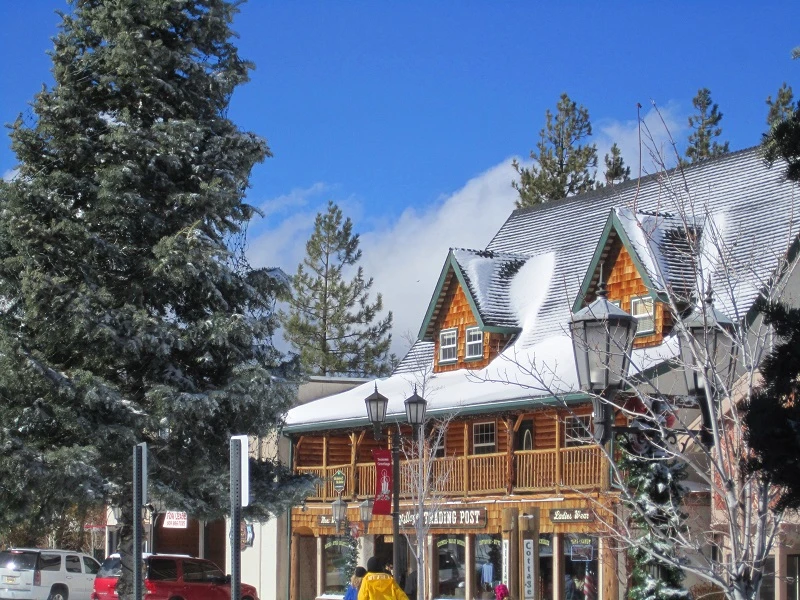
Want to know, “when does it snow in Big Bear”? Here we have compiled the details to answer your question and more details related to snowing in Big Bear.
Big Bear Lake is a tiny city in San Bernardino County, California, located along the southern coast of Big Bear Lake. The city is located directly west of Big Bear City and about 40 km northeast of the City of San Bernardino.
With a total size of 16.64 square kilometers and a high height of 6,752 feet (2,058 metres), Big Bear Lake is home to 5,279 people.
Big Bear Lake has a warm-summer Mediterranean climate with humid continental influences. Big Bear Lake experiences four distinct seasons, with summers that are warm, dry, and primarily clear and winters that are chilly, snowy, and partially overcast.
With an average temperature of 34.7 degrees Fahrenheit (1.5 degrees Celsius), February is the coldest month in the area. On the other side, July is the city’s warmest month, with typical highs of 65.1 degrees Fahrenheit (18.4 degrees Celsius).
Big Bear Lake receives more snowfall than most areas of California because of the city’s high elevation. Big Bear Lake has winter snowfall, and after 16.1 days of snowfall, the city records a yearly snowfall of 31.22 inches (793 mm).
Less snow falls at lake level than on the lake’s surrounding wooded slopes. At lake level, snowfall averages 30 inches (702 millimetres) every season but can exceed 100 inches (2,500 millimetres) at altitudes higher than 8,000 feet (2,400 metres).
The snow is one of Big Bear’s main attractions, especially for residents of Southern California. Ski season and a variety of winter sports that are normally impossible to access in a state recognized for its mild weather are brought on by Big Bear’s famed snowfall.
You might be considering the best time to travel to Big Bear and if it’s too early to participate in these winter activities as you make travel plans. This article will tell you when to book your vacation and what to pack for the winter weather in Big Bear.
Snowfall months in Big Bear Lake
Big Bear Lake records snowfall for seven months of the year. From January through May, as well as in November and December, snowfall occurs in the city. Here’s a deeper look at the snowy seasons in the city.
November snowfall
Big Bear Lake’s autumnal season ends in November. The city’s temperatures start to drop from those of October as the city enters the winter season. Lows in November at Big Bear Lake are 43.7 degrees Fahrenheit (6.5 degrees Celsius), with highs in November of 60.8 degrees Fahrenheit (16 degrees Celsius).
Big Bear Lake also has its first snowfall in November, with the city recording 4.53 inches (115 mm) of snowfall after 1.2 day
December snowfall
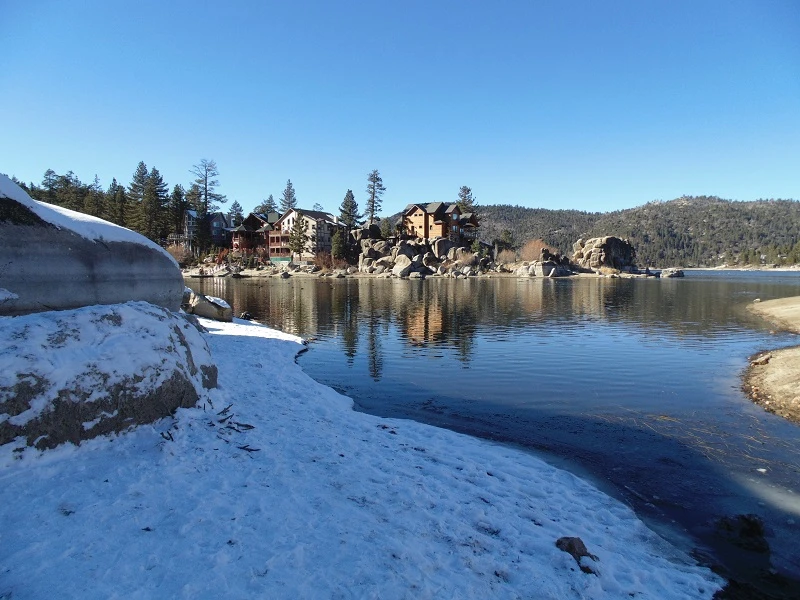
The first month of winter at Big Bear Lake is December, which is marked by chilly temperatures and significant snowfall. A typical day in the city will see a high temperature of 52.5 degrees Fahrenheit (11.4 degrees Celsius) and a low temperature of 37.2 degrees Fahrenheit (2.9 degrees Celsius).
Big Bear Lake experiences the maximum snowfall in December, with 6.54 inches (166 mm) of snowfall recorded after 2.9 precipitation days.
January snowfall
Big Bear Lake experiences a similar mild winter in January, with the same weather patterns as in December. The city’s temperatures, which range from highs of 54.5 degrees Fahrenheit (12.5 degrees Celsius) to lows of 38.8 degrees Fahrenheit (3.8 degrees Celsius), are the same as those observed in December.
Big Bear Lake receives snowfall for 2.2 days out of the month, totaling 2.28 inches (58 mm) of snowfall.
February snowfall
In Big Bear Lake, February often marks the end of the winter season. Another crisp month has arrived in the city, with mild temperatures and little snowfall. Big Bear Lake has a range of monthly highs and lows between 55 degrees Fahrenheit (12.8 degrees Celsius) and 39.2 degrees Fahrenheit (4 degrees Celsius).
Big Bear Lake records 3.9 days of snowfall in February, accumulating to a total depth of 4.84 inches (123 mm).
March snowfall
In Big Bear Lake, March is the start of the spring season. The city is seeing mild temperatures that are a little warmer than the wintery readings from February.
Big Bear Lake has an average temperature range of 42.3 degrees Fahrenheit (5.7 degrees Celsius) to 60.6 degrees Fahrenheit (15.9 degrees Celsius) during the month. After 3.1 days of snowfall in March, the city records a snowfall total of 5.59 inches (142 mm).
April snowfall
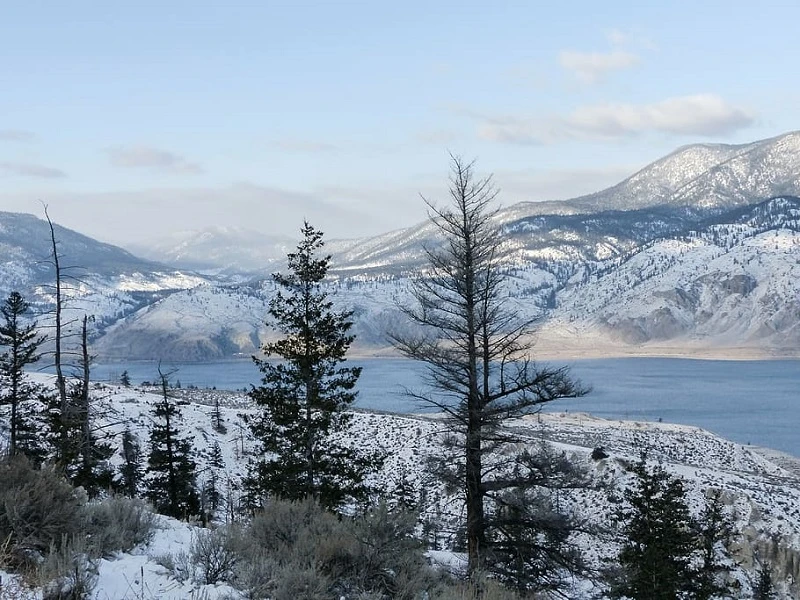
Big Bear Lake’s spring season peaks in April which is a pleasant month to visit the area. Highs of 66.6 degrees Fahrenheit (19.2 degrees Celsius) and lows of 45.9 degrees Fahrenheit (7.7 degrees Celsius) are the range of average temperatures in the city for the month.
Big Bear Lake experiences 1.8 days of snowfall in April, with a total snowfall of 6.42 inches (163 mm).
May snowfall
In Big Bear Lake, May marks the end of spring and snowfall. Pleasantly warm, with highs of 73 degrees Fahrenheit (22.8 degrees Celsius) and lows of 51.1 degrees Fahrenheit (10.6 degrees Celsius), are the city’s average temperatures for the month.
After one snowstorm day in May, Big Bear Lake reported a snowfall of 1.02 inches (26 mm).
When does it snow in Big Bear?
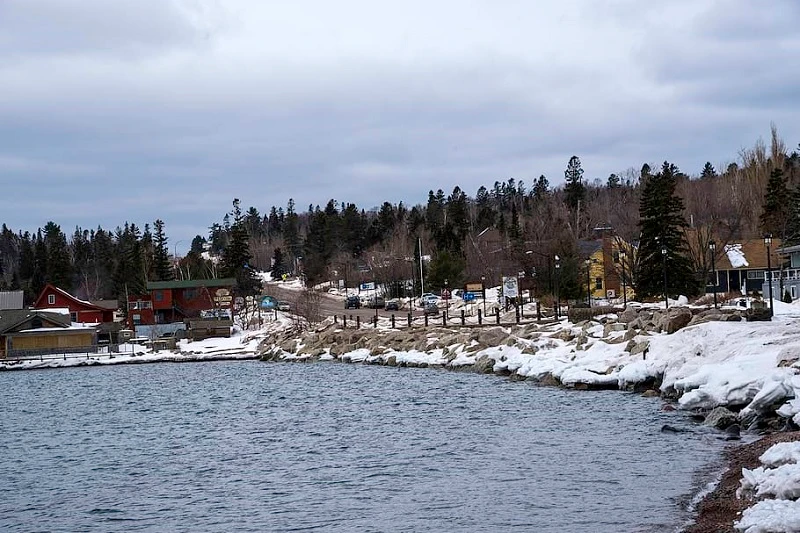
Every year, Big Bear typically sees four to five significant snowstorms, interspersed with light flurries. One of these storms frequently manifests as a huge snowstorm that might trap you within. However, if you’re staying in a cosy vacation apartment, this might not be too much of an issue.
Winter weather conditions can vary a little bit in Big Bear, but on average, Big Bear gets its first big snowstorm in mid-November. This first big storm typically drops about 5 inches of beautiful white snow on the mountains and town.
Ski resorts typically open on Thanksgiving weekend each year. Expect big crowds during opening weekend. It’s still an amazing time even if it’s busy.
Snowfall in Big Bear is typical from November until the beginning of spring, and occasionally even into May. The two weeks before and following New Year’s Day are often when snowfall is most intense, peaking around January 1st.
This is probably when the main snowstorm will occur if you want to be around. Don’t go to Massive Bear on these dates if you want to escape that massive storm!
The average ski season, when you travel to Big Bear to ski, lasts from mid-December to mid-March. Additionally, resorts may use artificial snow to extend the season. Your youngsters may find it intriguing to observe the snow machines in action. It’s a lot of fun.
To know what to anticipate during your stay and when the resorts are open, it is a good idea to examine the weather forecast and the specific circumstances of the ski resorts before you go.
To watch a live broadcast of the conditions, you may also check up with the snow cameras. It’s entertaining to follow along even if you don’t have any travel plans, simply to watch how the snow is doing all season long in this stunning region.
Big Bear often receives 10 feet of snow every year, which is dispersed among multiple storms, numerous little flurries, and typically one or two major blizzards. Each of the major storms will produce 4-5 inches of snow, but blizzards have the potential to produce up to two feet of snow in a single day.
How to Prepare in Big Bear for Snow?
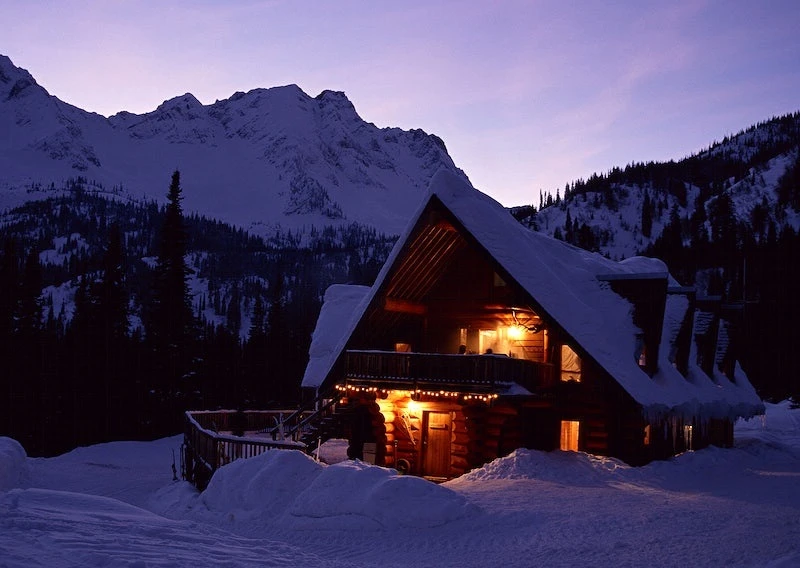
Since the City is quite skilled at removing snow, even when it isn’t actively snowing, the roads are often clean and very drivable. Before you continue up the mountain, check the road conditions.
To ensure that you may enter and exit the property anytime you need to, Little Big Sky Retreat also has a contract with a snow removal business.
However, be sure your vehicle is equipped to handle snowy weather. Use a car with four-wheel drive and all-weather or snow tyres if you can if you’re traveling during the winter. Make sure the automobile is adequately weighed as well because increased weight improves tire-road contact and friction.
Normally, people and baggage take care of this, but if you believe your car could be too light to withstand the snow, it wouldn’t hurt to pack a couple of sandbags in the trunk.
In case you become stopped and have to wait for help to arrive, keep warm clothing, blankets, and drink in the car. Even if it seems unlikely, it’s wise to be ready.
Of course, winter clothing is a need. Pack layers of warm clothes, an outer layer, waterproof shoes, and other items to keep you and your family warm and cosy during your vacation. But don’t worry if you forget something! The Village offers several shops where you may buy winter gear.
Winter Activities in Big Bear
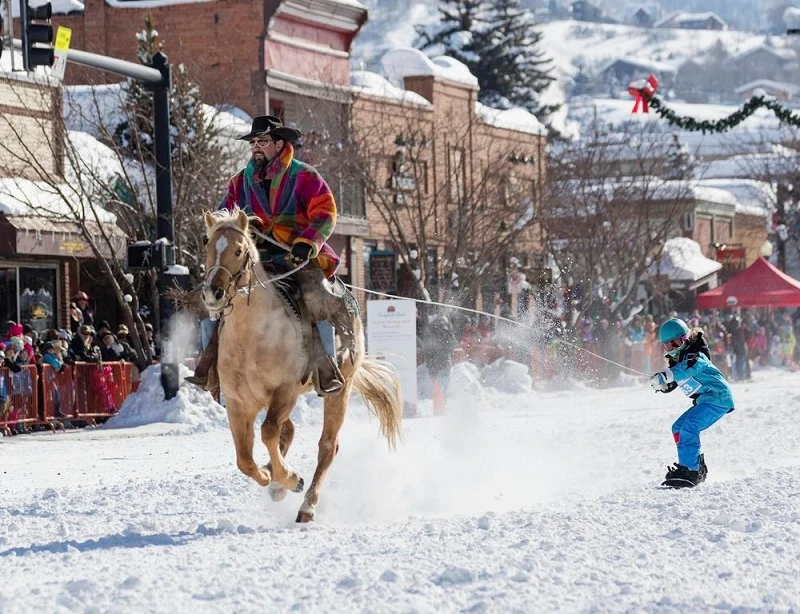
Big Bear experiences the most tourism throughout the winter, and with good reason! Whether you’ve been skiing your entire life or have never seen snow before, there is a tonne to do in the winter. The snow is magnificent.
In addition to skiing and snowboarding, there is also horse-drawn sleigh riding, snowshoeing and building snowmen in the Village. Additionally, don’t miss out on the Big Bear Snow Play Center’s family events.
The Village also offers a wide variety of indoor activities including dining, shopping, bowling, and arcade games. To find out what shows and festivals could be taking place while you’re there, check the local events calendar.
Additionally, many year-round sports (like zip lining and horseback riding) are considerably more enjoyable in the winter when the landscape is coated in a stunning layer of snow.
Of course, nothing beats cuddling up with loved ones in the hot tub or by the wood-burning fireplace in your holiday rental. Whatever winter activities you choose, you’ll enjoy spending time in Big Bear at this lovely time of year.
Accommodations during the winter at Little Big Sky Retreat
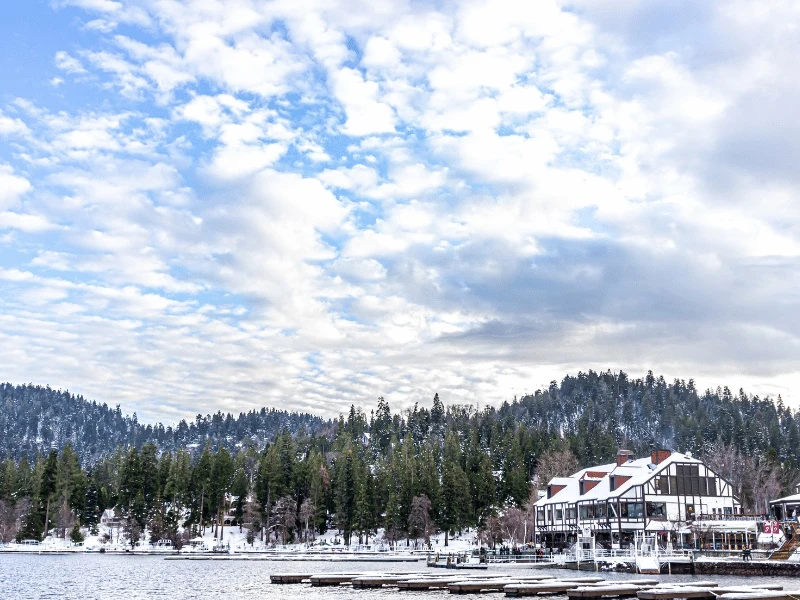
Little Big Sky Retreat is the ideal holiday home if you’re searching for accommodations for your winter trip to Big Bear. The cabin itself has a huge garden and terrace where you can enjoy making snow angels, constructing snowmen or having snowball battles.
It is available all year round. You might even be able to see animals from the home or patio, including the well-known Big Bear wild donkeys since the property backs up to the woods.
After having fun in the snow, unwind in the six-person hot tub on the terrace or head inside to watch a movie on one of the numerous smart TVs while sipping tea, coffee, or hot chocolate from the kitchen’s supply.
Even the wood is provided so you can enjoy a roaring fire in the fireplace all evening long while inside watching the snowfall.
Snuggle up in one of the three bedrooms, each of which has a smart TV and two king-size beds. A full-size jetted tub is also included in the master suite for the most romantic evenings.
Conclusion
Hope you have enjoyed our article on when does it snow in Big Bear and hope we have given the answer. The ideal season to go to Big Bear is probably winter, especially if you enjoy winter activities or want a change of scenery from the usual and somewhat boring weather in Southern California.
There is no better spot to create memorable moments with your loved ones, whether they are family or romantically, or even simply to take a lonely mountain escape.
Visit over the holidays or for some wintertime amusement to pass the time between Christmas and the start of spring. You’ll have a wonderful experience in this unique location that is near and dear to my heart, whatever the reason you choose to visit Big Bear.
